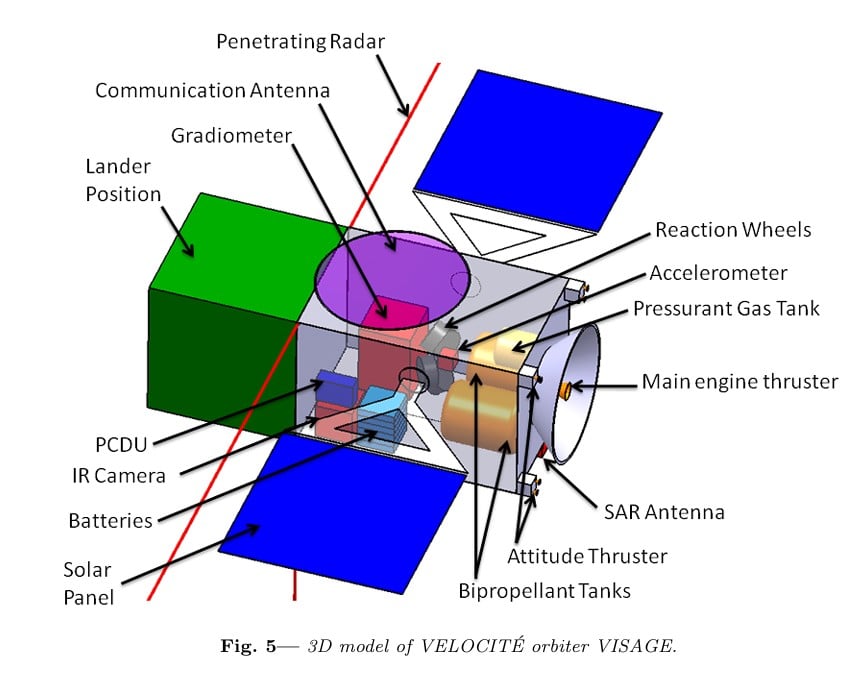Sometimes it's fun to look back at old missions that never were. There are more of those than the missions that receive funding and are launched, but many of those were influenced by the ones that were funded that came before. A great fountain of mission ideas is the Alpbach Summer School, held annually in Austria. Every year, at least two teams publish papers defining a complete mission concept as part of their capstone experience at the school. One published in 2014 describes a mission designed to look at Venus' tectonic activity, and even though the concept is over 11 years old, the scientific questions it sought to answer are still outstanding today.
One of the big outstanding questions in planetary science is why Earth ended up the way it is, while Venus and Mars, two relatively comparable planets, ended up so differently from Earth and from each other. Many theories on the evolution of Venus focus on what happens underground. We've reported the tectonic activity in Venus, but localized volcanism is also thought to play a significant role in Venus' climate.
Enter the VEnus Lander and Orbiter for Characterising the Interior and TEctonics (VELOCITÉ), a mission concept put forward by the "Blue" Team of Albach's summer school in 2014. As its name suggests, the mission had two primary objectives: study Venus' tectonic activity and discover more about its internal structure and dynamic processes under its surface.
Geologic activity would be captured by observations of surface displacements, temperature variations, and measurements of large-scale mass redistributions, where a large part of the planet's surface physically moves. Interior studies would include collecting data on the size and shape of the planet's core, its rotational parameters, and calculations of its reaction to tidal forces.
Capturing all this data would require two separate types of craft - an orbiter and two landers. The orbiter, known as VISAGE, would carry a synthetic aperture radar to allow it to peer below the clouds that block the view of the planet's surface. It would also carry an infrared sensor to detect temperature variations, a gradiometer and accelerometer to capture gravitational data, and a ground penetrating radar to try to look under the planet's surface.
The two landers, LOVE-1 and LOVE-2, would have their own suite of instruments that would communicate their data back up to VISAGE to relay back to Earth. Each would carry a seismometer, a permittivity probe that would allow them to measure the dielectric constant of the surface they land on, and a series of cameras to capture their surroundings.
Surface's surfaces is harsh - designing things to last there is hard, as Fraser describes.
VISAGE's planned operational life is around 5 years, whereas the landers would only have an operational life of a few hours due to the harsh surface conditions on Venus. It was originally planned for a launch (back in 2014) in December 2032, giving the mission planners plenty of time to work through the details and bring any technologies up to snuff in advance of a launch date almost two decades away.
Despite that long lead time, VELOCITÉ was not funded past the end of the summer school. However, several missions currently heading to Venus have some of the same instrumentation. EnVision, developed by ESA, hopes to peer into the planet's core using gravitational measurements. DaVinci, developed by NASA, is trying to focus on Venus' development by concentrating on its atmospheric composition. Since part of the point of science is to share and disperse ideas, it's hard to tell what, if any, influence a bunch of students developing a mission design over a decade ago had on these real-life missions. But that is why science is so great - ideas can be accepted and rejected based on their merit, but if they are good, like VELOCITÉ mission design seems to be, they continue to grow even decades later.
Learn More:
J. Bartolomaus et al -VELOCITÉ
UT -ESA is Joining NASA With Their own Mission to Venus
UT -Venus is Important. We Should Take its Exploration Seriously.
UT -The Next Generation of Exploration: The DAVINCI Spacecraft
 Universe Today
Universe Today
